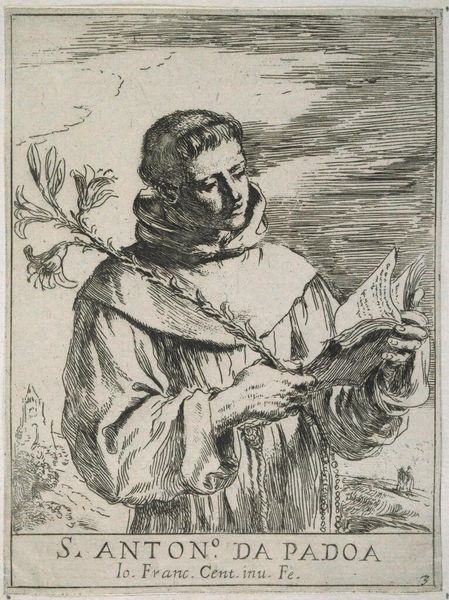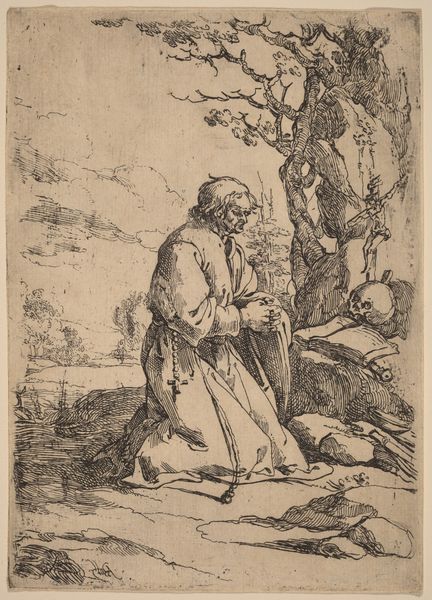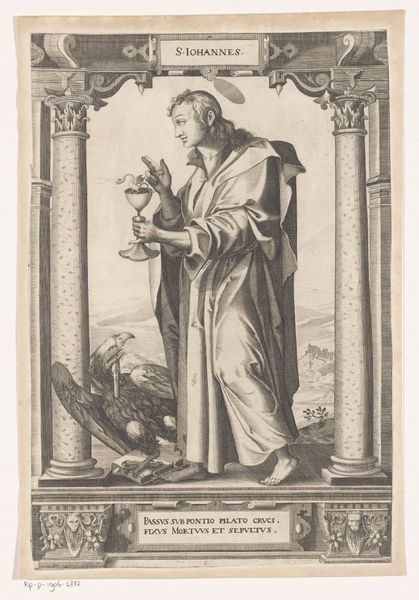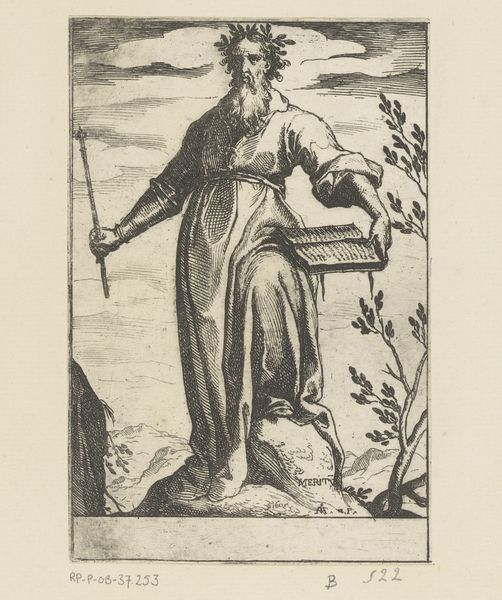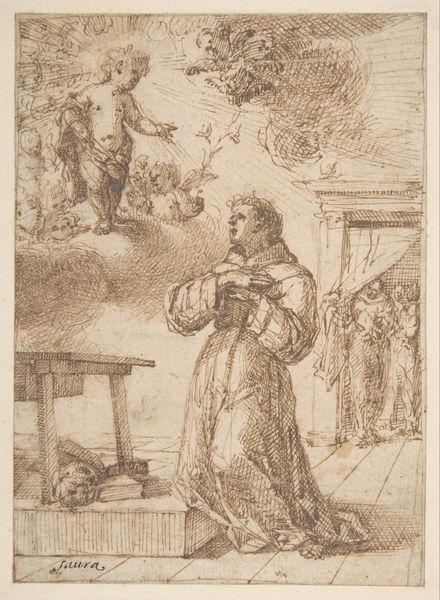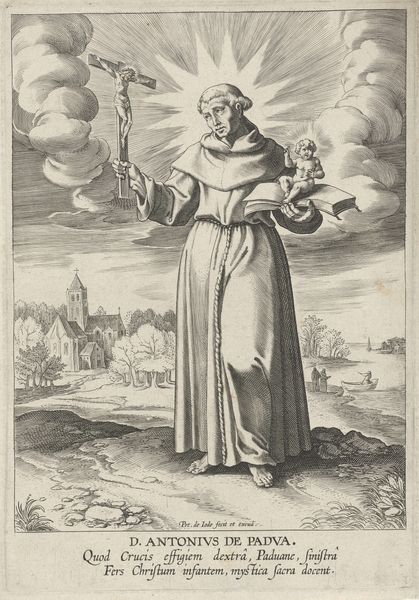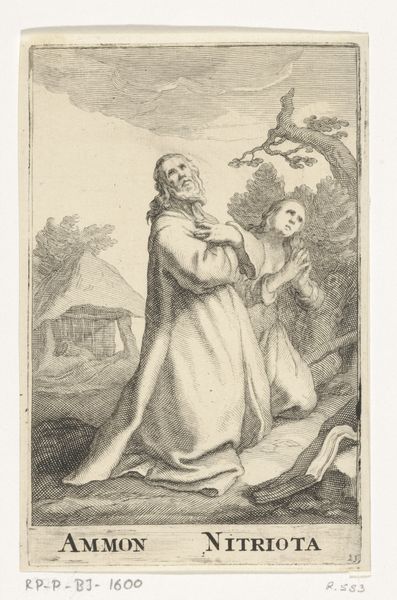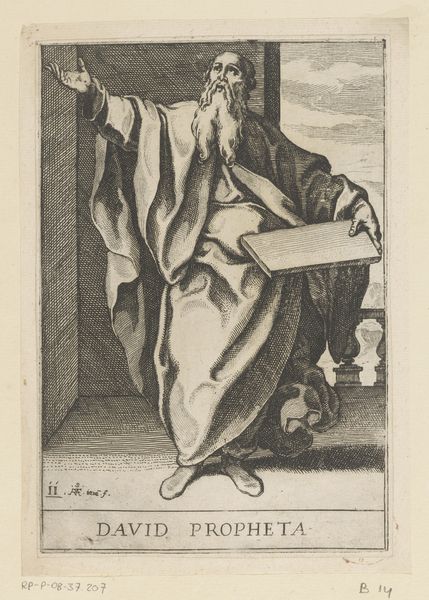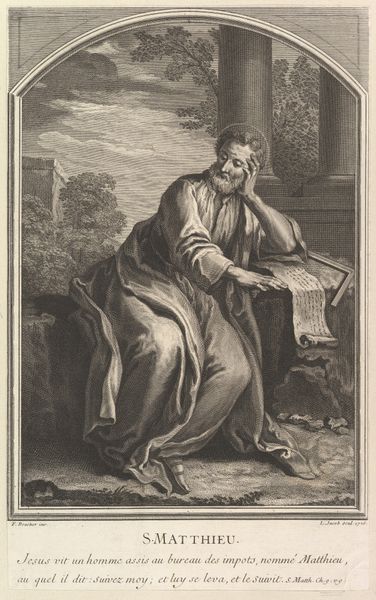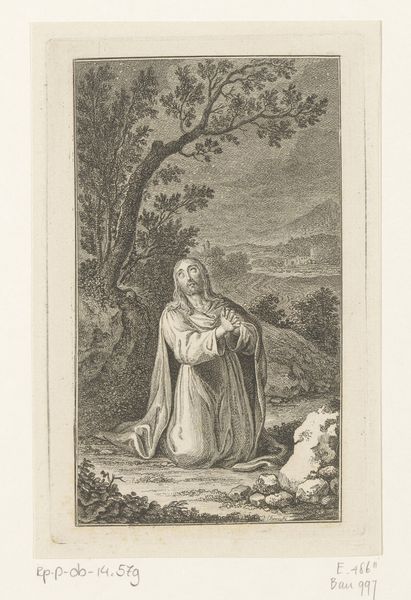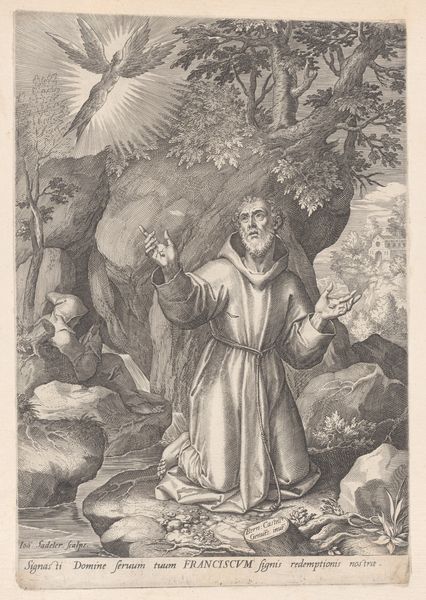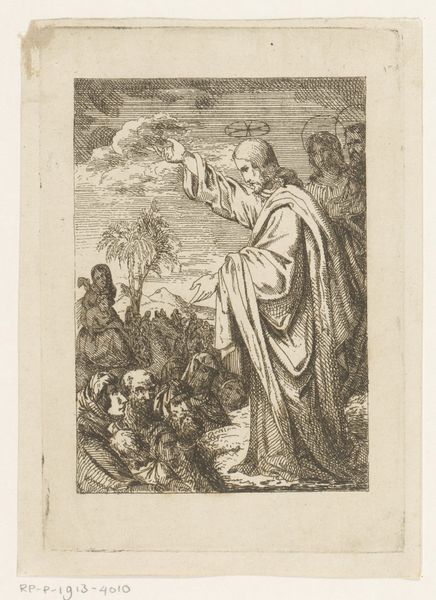
print, etching
#
portrait
#
baroque
# print
#
etching
Dimensions: sheet (trimmed to platemark): 15 × 11.2 cm (5 7/8 × 4 7/16 in.)
Copyright: National Gallery of Art: CC0 1.0
Editor: This etching, Saint Anthony of Padua by Guercino, dates to the 1630s and what strikes me is the way light falls across his face, it's quite dramatic. What do you see in this piece? Curator: Well, consider the lily he holds. Its purity is a strong visual metaphor for Anthony’s own reputation for chastity and virtue. The lily speaks volumes. It links to narratives of innocence and divine blessing, consistently used to convey those ideas through art. Editor: So the lily isn't just a pretty flower, it’s loaded with meaning? Curator: Exactly. And notice how Anthony is also holding a book, presumably scripture, symbolizing his role as a Doctor of the Church. But think also, the very *act* of reading represented in visual form indicates intellectualism and devotion – incredibly powerful, socially. Have you observed other recurring objects connected with Anthony's imagery? Editor: Now that you mention it, he often has a child with him. Curator: Indeed. He had a profound connection with children – a symbol of the soul, of purity, but also the Church's future. This echoes larger ideas present across Baroque portraiture but localized to Anthony's known reputation. The image itself functions like a prayer, invoking specific spiritual ideas to trigger emotional responses. Editor: That really sheds light on how much symbolism is packed into a single image, going beyond just a portrait! Curator: Precisely. It reveals how a simple image can echo through collective memory and spiritual beliefs, even centuries later.
Comments
No comments
Be the first to comment and join the conversation on the ultimate creative platform.
